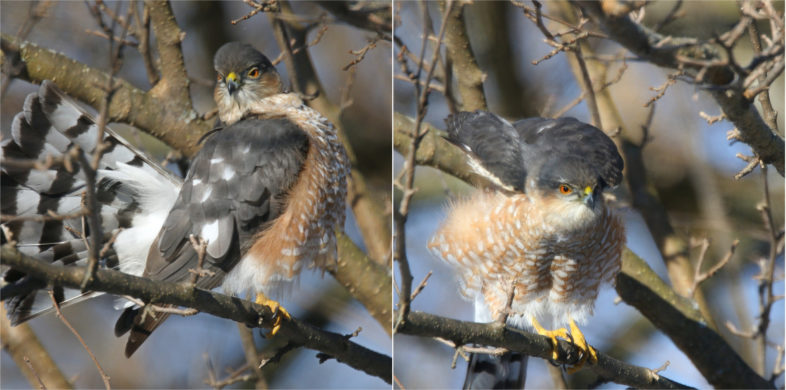
A Sharp-shinned Hawk preening. Click on the image to see the full observation at the Vermont Atlas of Life on iNaturalist. / © Mike Blust
Congratulations to Michael Blust for winning the February 2019 Vermont Atlas of Life iNaturalist photo-observation of the month. The images of Sharp-shinned Hawk preening in a mulberry tree and then staring into the camera lens garnered the most accolades.

The top February photo-observations by vote. Click on the image to see more at the Vermont Atlas of Life on iNaturalist.
Offering novel insights into mercury’s threat to wildlife, our scientists revealed how the toxin mercury deposited from the atmosphere moves and concentrates across the food chain in forest ecosystems. Near the summit of Stratton Mountain, VCE biologists tracked mercury from tree needles and leaves to insects and spiders to salamanders and songbirds, and in due course to top predators such as hawks and owls. VCE’s work documented generally rising mercury concentrations up the food web — from plants to plant-eaters to carnivores. As might be expected, Sharp-shinned Hawk, at the top of the montane forest food web, showed the highest mercury levels in their blood. From vernal pools to mountain tops, learn more about VCE’s studies examining mercury and wildlife.
Visit the Vermont Atlas of Life on iNaturalist where you can vote for the winner this month by clicking ‘fav’ on your favorite photo-observation. Make sure you get outdoors and record the biodiversity around you, then submit your discoveries and you could be a winner!

We watched a hawk owl all afternoon today, 3/10, and wonder whether these owls are common in Vermont during the winter months.